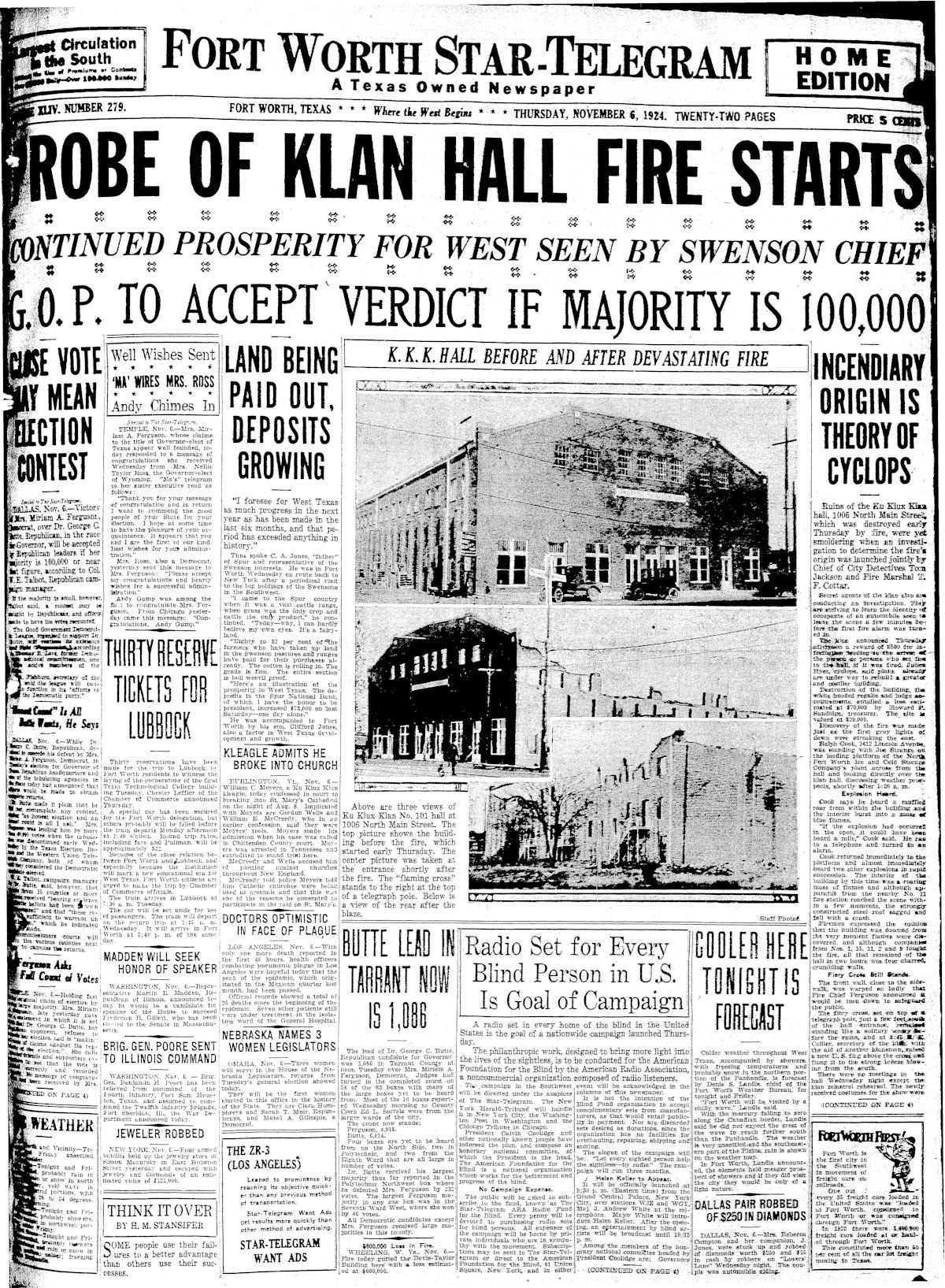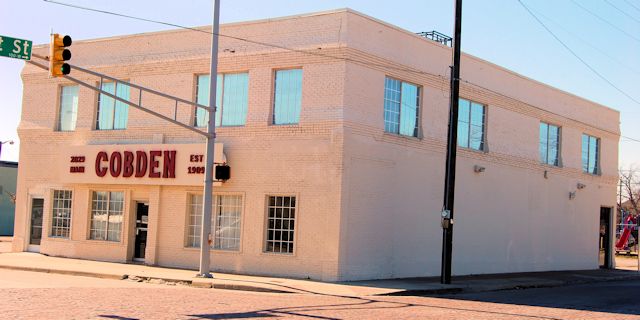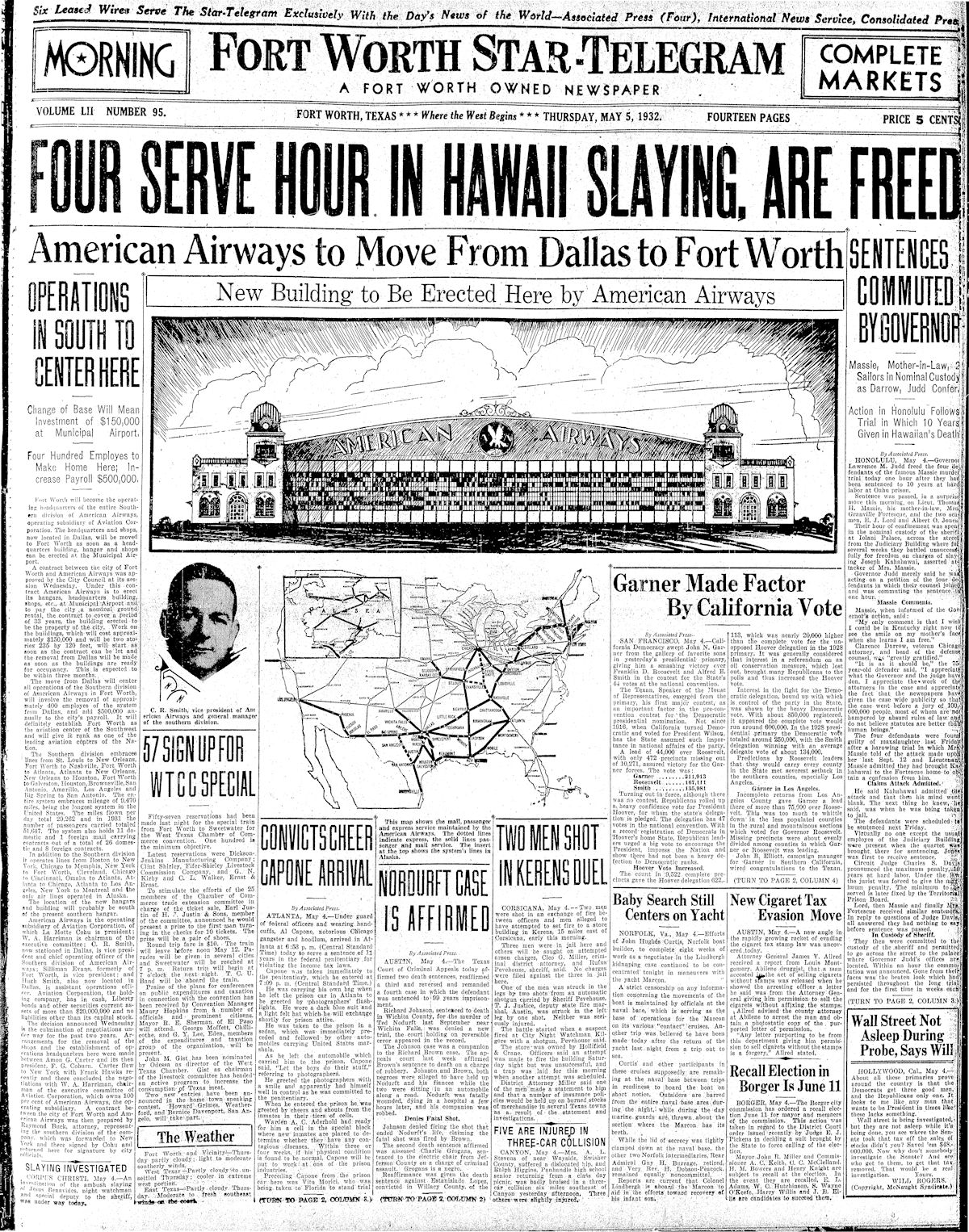Today, while everyone else is downtown on the final day of Main St. Fort Worth Arts Festival, we conclude our tour of the “other” Main streets with a second look at North Main Street (see Part 1, Part 2, Part 3).
 Lodge hall of Fort Worth’s Ku Klux Klan klavern (lodge) 101 (1925). Architect was Earl Glasgow, himself a member of the klavern. Glasgow also designed a 1936 addition to Charles E. Nash Elementary School.
Lodge hall of Fort Worth’s Ku Klux Klan klavern (lodge) 101 (1925). Architect was Earl Glasgow, himself a member of the klavern. Glasgow also designed a 1936 addition to Charles E. Nash Elementary School.


 Fort Worth’s Ku Klux Klan klavern 101, one of the largest KKK lodges in the state, built a lodge hall on North Main in 1924. The auditorium seated four thousand. On October 18 escape artist Harry Houdini took the stage to ask the question “Can the dead speak to the living?” Three weeks later, on November 6, the hall itself was dead, destroyed by a fire of suspicious origin. But the hall was resurrected: The present building, very similar to the 1924 building, opened on June 5, 1925. But in 1931, as Klan membership dwindled, the KKK sold the building to the Leonard brothers to use as a warehouse. Later the building housed a boxing arena. In 1946 it was bought by the Ellis Pecan Company.
Fort Worth’s Ku Klux Klan klavern 101, one of the largest KKK lodges in the state, built a lodge hall on North Main in 1924. The auditorium seated four thousand. On October 18 escape artist Harry Houdini took the stage to ask the question “Can the dead speak to the living?” Three weeks later, on November 6, the hall itself was dead, destroyed by a fire of suspicious origin. But the hall was resurrected: The present building, very similar to the 1924 building, opened on June 5, 1925. But in 1931, as Klan membership dwindled, the KKK sold the building to the Leonard brothers to use as a warehouse. Later the building housed a boxing arena. In 1946 it was bought by the Ellis Pecan Company.
 Calvario Funeral Chapel originally was a Shannon facility. Samuel David Shannon, with George Gause, had begun North Side Undertaking Company in 1906.
Calvario Funeral Chapel originally was a Shannon facility. Samuel David Shannon, with George Gause, had begun North Side Undertaking Company in 1906.


 Rose Marine Theater began as Roseland Theater in 1914. Clips are from 1914 and the 1916 city directory.
Rose Marine Theater began as Roseland Theater in 1914. Clips are from 1914 and the 1916 city directory.

 On March 7, 1909 the Star-Telegram announced S. T. Percy’s plan to build at 1424 North Main.
On March 7, 1909 the Star-Telegram announced S. T. Percy’s plan to build at 1424 North Main.

 The McCarthy Building (1927) at 2222-24 North Main, with its ornate brickwork and red clay tile roof, in the 1930s yoostabe Cliff Magers’s Chevrolet dealership.
The McCarthy Building (1927) at 2222-24 North Main, with its ornate brickwork and red clay tile roof, in the 1930s yoostabe Cliff Magers’s Chevrolet dealership.
 Googins Building (1911).
Googins Building (1911).
 The Vinnedge Building (Clarkson, 1927).
The Vinnedge Building (Clarkson, 1927).
 When the city began using telephone exchanges in 1910, the 1909 Cobden Building housed the new Prospect exchange.
When the city began using telephone exchanges in 1910, the 1909 Cobden Building housed the new Prospect exchange.
 Not all the art on Main Street is downtown at the Main St. Fort Worth Arts Festival, y’know. Vaquero de Fort Worth by artists David Newton and Tomas Bustos stands in the traffic triangle on North Main Street at Central Avenue.
Not all the art on Main Street is downtown at the Main St. Fort Worth Arts Festival, y’know. Vaquero de Fort Worth by artists David Newton and Tomas Bustos stands in the traffic triangle on North Main Street at Central Avenue.
And this vaquero is not the only one on North Main.

Los Vaqueros restaurant is located in a building built in 1915 as a packinghouse. The roof of the second floor has been removed.
 And then there’s this painting that graces the front of a pool hall near North Side Drive. This painting always catches my eye.
And then there’s this painting that graces the front of a pool hall near North Side Drive. This painting always catches my eye.
I wish it wouldn’t.
 This little building (circa 1937) at 3217 North Main Street once housed Rockyfeller no. 11 at 2327 North Main. The building was moved to its current location in 1957. The building now houses Sunny Burger. (2021 update: This building has been demolished.)
This little building (circa 1937) at 3217 North Main Street once housed Rockyfeller no. 11 at 2327 North Main. The building was moved to its current location in 1957. The building now houses Sunny Burger. (2021 update: This building has been demolished.)
 On North Main at Northwest 38th Street, this sign directs visitors to the Vintage Flying Museum four blocks west at Meacham Field (1925).
On North Main at Northwest 38th Street, this sign directs visitors to the Vintage Flying Museum four blocks west at Meacham Field (1925).
 The museum is housed in a hangar large enough to accommodate the B-29 FIFI.
The museum is housed in a hangar large enough to accommodate the B-29 FIFI.
 Meacham Field began its career as “Fort Worth Airport” in 1925. It was later renamed for Mayor H. C. Meacham (1925-1927).
Meacham Field began its career as “Fort Worth Airport” in 1925. It was later renamed for Mayor H. C. Meacham (1925-1927).
 A detail of the hangar of American Airways at Meacham Field.
A detail of the hangar of American Airways at Meacham Field.

In 1932 American Airways announced that it would move its headquarters from Dallas to Fort Worth and build new facilities at Municipal Airport. The hangar was built in 1933. American Airways became American Airlines in 1934.
 Finally, South Main doesn’t have a monopoly on grain elevators (see Part 1). To the north, Fort Worth’s Main Street ends at the Saginaw city limit along Industrial Boulevard. At that intersection looms the Burrus grain mill and elevator. At that mill in 1931 the Light Crust Doughboys were hired by Wilbert Lee “Pappy” O’Daniel, whose Burrus Mill and Elevator Company sponsored the band. Out of the Doughboys band came western swing pioneers Bob Wills and Milton Brown.
Finally, South Main doesn’t have a monopoly on grain elevators (see Part 1). To the north, Fort Worth’s Main Street ends at the Saginaw city limit along Industrial Boulevard. At that intersection looms the Burrus grain mill and elevator. At that mill in 1931 the Light Crust Doughboys were hired by Wilbert Lee “Pappy” O’Daniel, whose Burrus Mill and Elevator Company sponsored the band. Out of the Doughboys band came western swing pioneers Bob Wills and Milton Brown.
The Doughboys recorded in a studio at the mill. At first O’Daniel even required that members of the band work at “day jobs” at the mill. Wills drove a truck; Brown was a salesman.
That’s the end of our tour of the eleven miles of the “other” Main streets from Pep Boys to Doughboys, from Manny, Moe, and Jack to Bob, Milton, and Herman (Arnspiger). Oh, by the way, Fort Worth’s Main Street is also U.S. Route 287, which stretches 1,800 miles from Port Arthur up through Crockett, Corsicana, Fort Worth, Saginaw, Wichita Falls, Dumas, and Denver to Choteau, Montana. Y’all go on up there if you want. Me, after eleven miles I’m plumb tuckered. I’m gonna sit here by the tracks and rest, maybe hum a few bars of “I’m a Ding Dong Daddy.”





